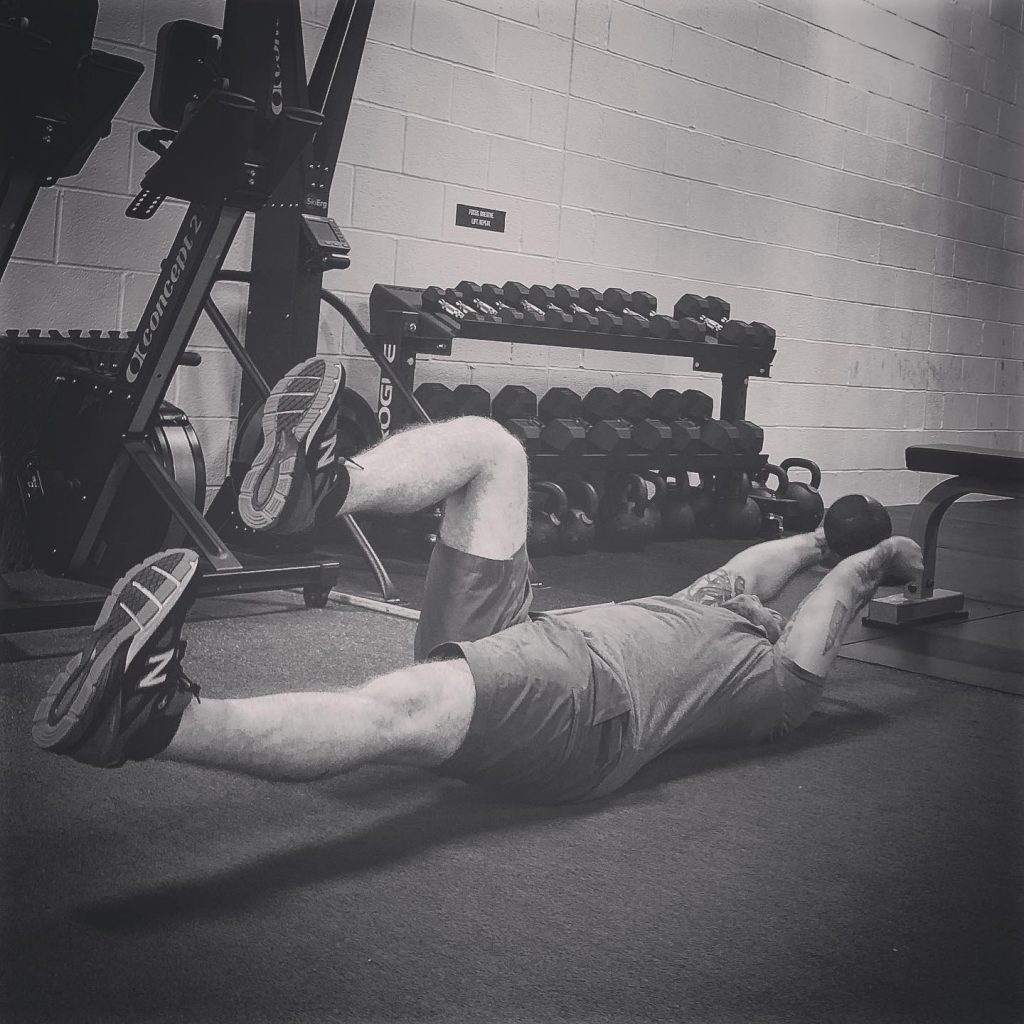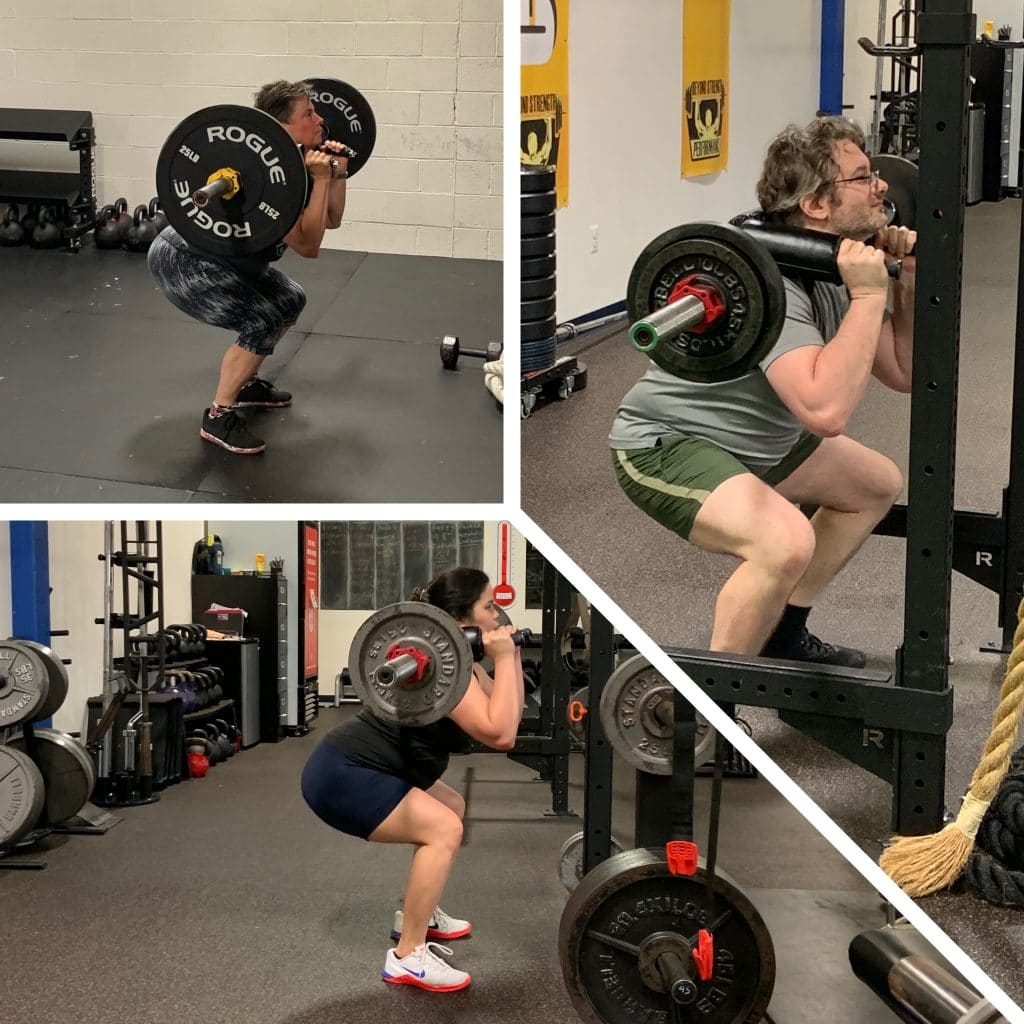When you walk into most gyms around the world, you’ll see numerous core exercises being performed. Typically, you’ll see people doing sit ups and crunches (and maybe some planks).
This isn’t surprising.
You learned that the key to washboard abs is doing sit ups and crunches; that those exercises were the best ones to get a strong core. To look shredded. To look toned. So you do sit up after sit up, all in hopes of getting a six pack, or looking lean in general.
Maybe you learned this from a magazine with some shredded dude, or some bikini wearing super model, on the cover. Maybe from your P.E. teacher in high school.
Regardless, there are better ways to train the core (like with anti-core exercises, which you can read more about here), and one exercise in particular is a favorite of ours at BSP NOVA: the Dead Bug.
In the rest of the blog, I’ll discuss three things with regard to Dead Bugs:
- What Dead Bugs are, so you know what they look like
- Why they’re beneficial, which means you’ll understand how they can help you in and out of the gym
- How to do them, so that you’ll be a Dead Bug pro, which means they’ll actually help you get a stronger core

What Is A Dead Bug?
Dead Bugs are an anti-core exercise (anti-extension core exercise, to be more specific), as mentioned before, where we primarily resist motion–not create motion.
Think of a plank. That’s an anti-core exercise because you’re resisting gravity from pushing you out of position. In the Dead Bug, our goal is to move our limbs without letting our lower back position change.
Now, think of a sit up. That’s not an anti-core exercise because the goal is to create motion, and our spine moves around a ton.
To see what a Dead Bug looks like, check out the video below.
Word?
“Word, Tommy,” you might be thinking. “I see what they look like now, but why are they better than other exercises?”
That’s a great thought you had there, curious reader, so let me answer that for you next.
Why Do Dead Bugs?
When we perform movements in the gym—especially bigger lifts like deadlifts and squats—we want our lower back to remain in the same position; in other words, we don’t want our lower back rounding or extending while lifting a heavy weight.
Spines don’t like moving under heavy load.
Dead Bugs help us gain core strength and stability to maintain position under load.
Here’s another benefit: Dead Bugs teach us to dissociate our joints.
Say whaaaaaat? In non-sciencey words, dissociation of our joints means we can move them independently from each other.
For example, in a Dead Bug, we learn to move our opposite arm and leg without anything else moving. Our lower back stays flush with the floor, and limbs we’re not trying to lower stay stationary.
Being able to dissociate our joints is a good thing, especially in the gym. For example, in a heavy squat we want to be able to move our hips and knees separate from our lower back; in other words, we don’t want to be a human slinky, where our hips move and the lower back comes along for the ride.
Learning to move stuff separately helps us when we do our bigger movements.

Lastly, they teach us how to manage our breathing for big exercises. During Dead Bugs, we breathe in as our limbs lower, and breathe out on the way back in.
Having more air in our body makes us more stable. This is good. By inhaling as we lower our limbs, we have more stability at the hardest part of the movement.
This translates to other movements like a squat, for example. When squatting, we take a breath in so we have air at the bottom—the hardest part of the squat. By training ourselves to have air inside at the hardest part of a Dead Bug, it trains us to breathe more effectively during a squat—and nearly every other movement too.
How To Do Dead Bugs (and some variations)
I know I know, after reading all of that, you’re probably dying to know how to do Dead Bugs, right? Awesome! Let’s start with four tips that apply to all Dead Bugs:
- Keep your lower back flush with the floor, so that you keep constant tension on your core
- Only move as far as you can without letting your lower back come up (more is not better always)
- Inhale as your lower your arm/leg and exhale as your bring your arm/leg back in
- Go slow and controlled to keep tension—the goal isn’t how fast you can get through the movement
Lastly, depending on the variation, the number of sets and reps could differ some. However, a good starting point is doing 2-3 sets of 3-6 reps on each side.
Now let’s dig into specific variations.
Dead Bugs—Arms Only
This is a regression, or easier variation, of a standard Dead Bug. We don’t typically start people here—we start them with Dead Bugs—but it can be a helpful variation to learn the movement.
How-to:
- Start with your legs and arms forming 90 degree angles with your torso (as shown in the video below)
- With your lower back flush with the ground, lower your arm slow and controlled without letting your lower back come up off the ground
- After bringing your arm back to the start position, lower your opposite arm
Dead Bugs—Legs Only
This is a slightly more challenging variation than the arms only one. The difference here is that the arms stay still while the legs move. Lower back stays flush with the floor as always.
Dead Bugs
For full Dead Bugs, your opposite arm and leg are moving—not just one or the other.
How-to:
- Start with your legs and arms forming 90 degree angles with your torso (as shown in the video below)
- Lower your opposite arm and leg towards the floor (doesn’t have to touch the floor) without letting your lower back come up.
- Return to the start position and repeat the movement by using your other arm and leg
Dead Bugs Iso
Regular Dead Bugs can be trained for a long period of time without needing much variation, but, after a time, they may become too easy. When this happens there are numerous ways to progress the movement and make it more challenging.
One option is the Dead Bugs Iso. This puts us in the hardest part of the movement—with our limbs lowered towards the floor—and has us spend extra time there.
How-to:
- Perform a normal Dead Bug but pause in the bottom position and breathe (we program this for a number of breaths per side or time)
Kettlebell Dead Bugs
Another way to progress the Dead Bug is to add external load by using a kettlebell (you can use a dumbbell too if no kettlebell is available).
How-to:
- Starting with the kettlebell in both hands, your arms locked or slightly bent, lower the bell towards the floor as you lower one of your legs
- Bring the leg and arms back to the starting position, then repeat the movement with the other leg
Kettlebell Dead Bugs w/ Reach
To add another level of challenge to the Kettlebell Dead Bug, we can add a reach to it.
How-to:
- After lowering the kettlebell and one leg towards the floor, leave your leg lowered while you bring the kettlebell back to the start position
- From here, reach the kettlebell towards the ceiling—your shoulders will come off the ground slightly
- Finally, bring your leg back to the start position, then repeat the movement with your other leg
Wall Press Dead Bugs
In addition to using a kettlebell to make Dead Bugs more challenging, we can also use a wall.
How-to:
- Position yourself a few inches away from the wall and place your hands on the wall
- With your elbows slightly bent, drive your arms into the wall while lowering one leg at a time
Next Steps
If you’ve never done a single Dead Bug before, then start with the arms only version and progress to a full Dead Bug as you feel able.
If you’ve done Dead Bugs before and want to try a more challenging variation, then try the Dead Bugs Iso or Kettlebell Dead Bugs to start.
Regardless of whether you’ve done them or not though, Dead Bugs are an awesome core exercise to use in your training.
By the way, if you’re dead set on learning more about Dead Bugs, and other exercises in general, then check out the link below to claim your free week. We’d love to help you reach your fitness goals—whatever they may be—and put you in the best position to be successful.
